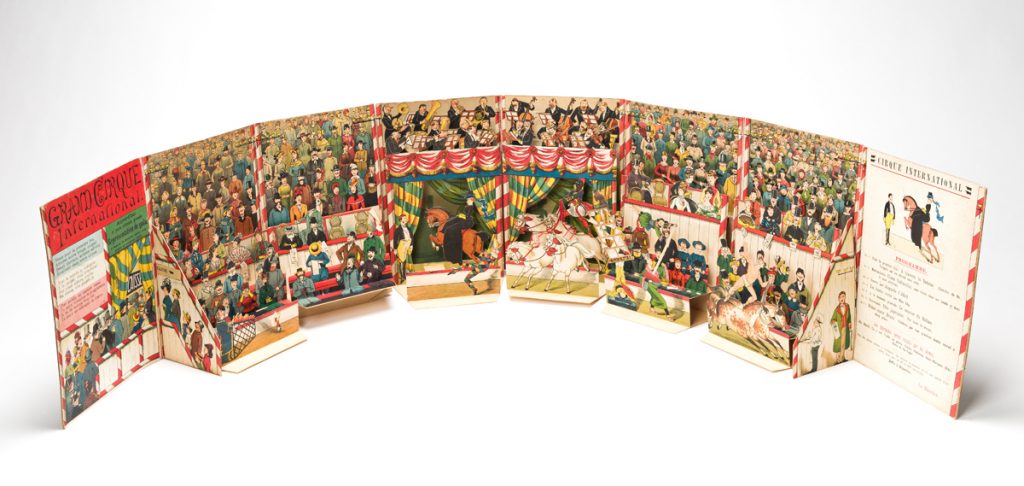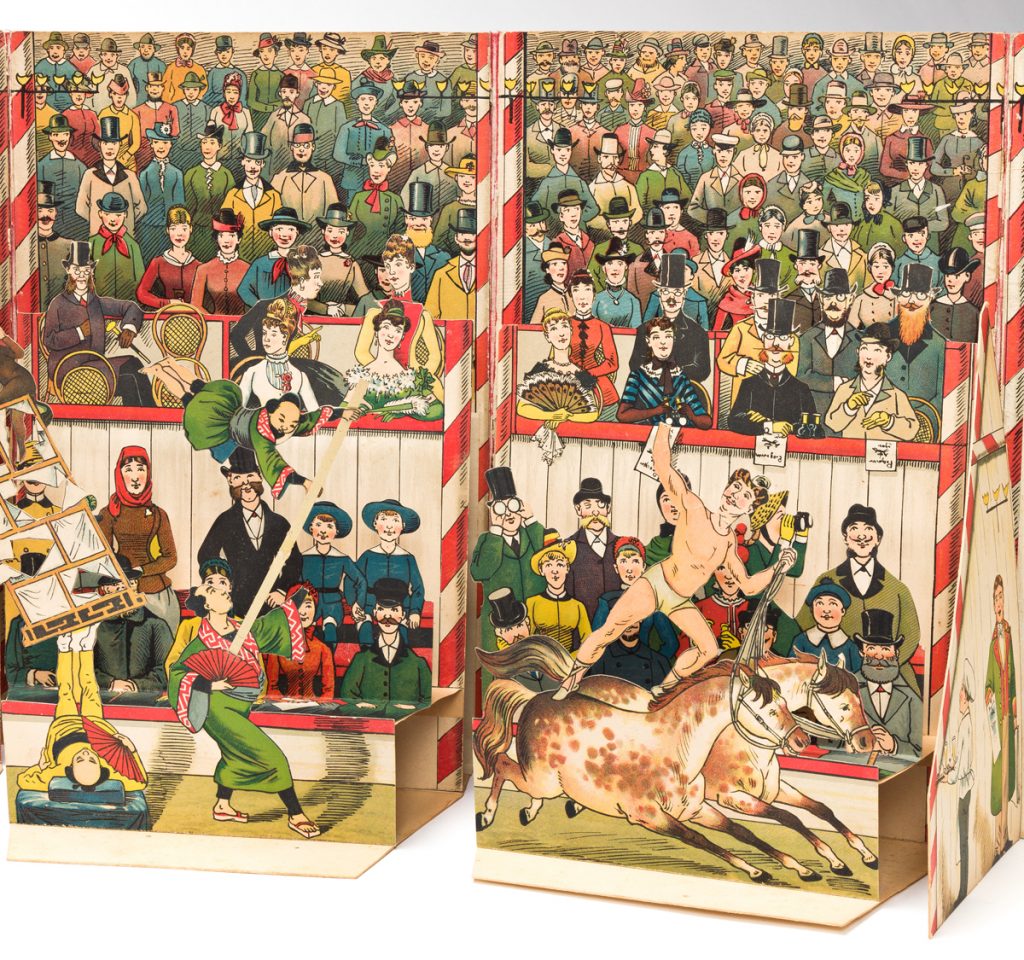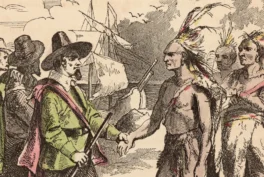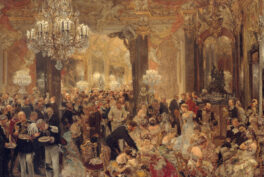Summary
Great pop-up books are brilliantly engineered sculptural artifacts. Let’s take a look at their long history.
Names for these visual treats include moveable books, lift-the-flap books, pop-ups, pull-downs, living models, volvelles, tunnel books, metamorphosis books, or 3D books. And at over 800 years old, early pop-ups actually pre-date standard book printing.
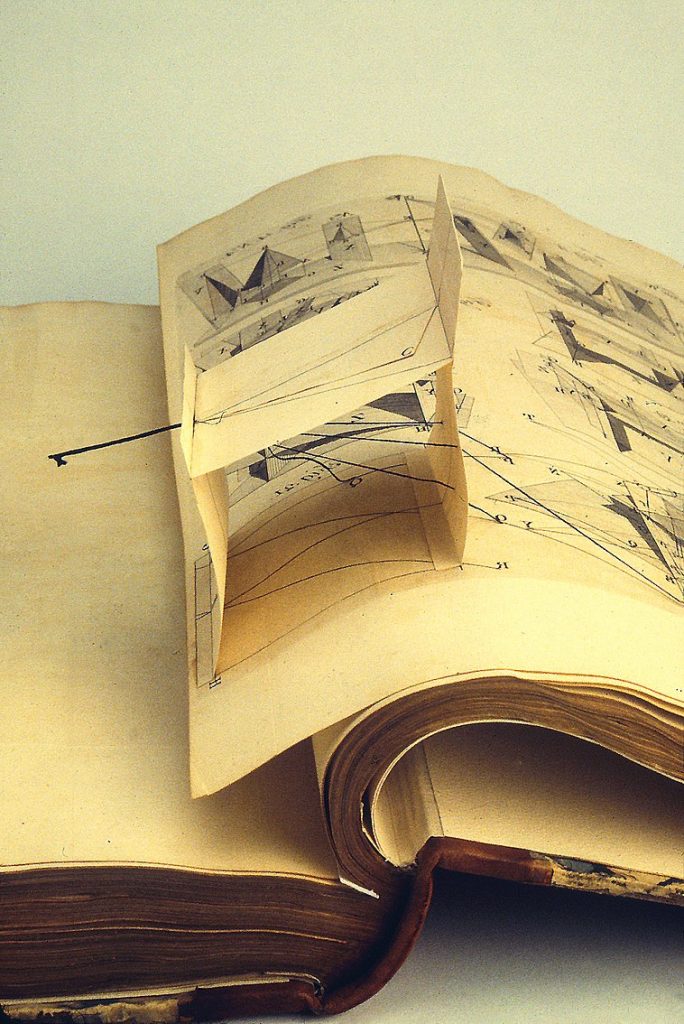
Pop-up books: Thomas Malton the Elder, Treatise on Perspective, 1775, detail of pop-up mechanism. Wikiwand.
Paper Engineering
Great pop-up books are brilliantly engineered sculptural artifacts, to be carefully pored over and handed down through generations. Many pop-up artists have proved very collectible (and therefore sadly out of my price range!). But every good bookstore has affordable books, for art lovers of all ages.
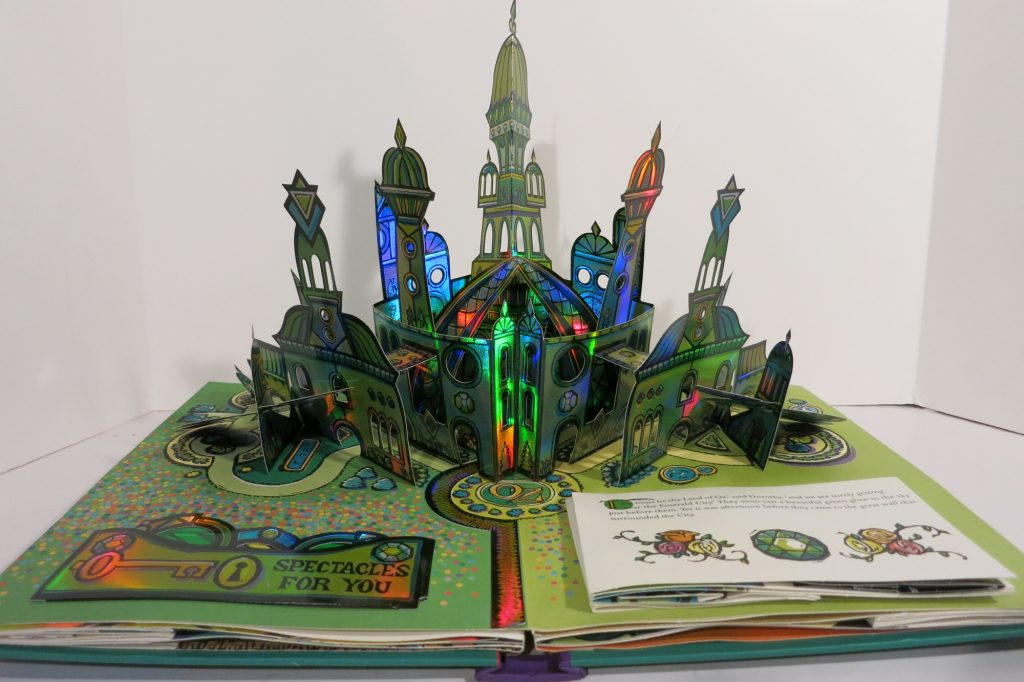
Pop-up books: Robert Sabuda, The Wizard of Oz, 2001. Simon and Schuster, UK.
Liber Floridus
There are different kinds of movable books, and it may surprise you to know that the first of these were made in the Middle Ages and were definitely not for children! Now we get to the controversy. Some historians say the earliest example is a gatefold illustrated manuscript compiled between 1090 and 1120, titled Liber Floridus (Book of Flowers). It contains history, geography, natural history, and even illustrates the orbits of the planets around the Earth. It is one of the most famous examples of a medieval encyclopedia, and was made by Lambert, Canon of Saint Omer. But is a fold-out page really a pop-up? What do you think?
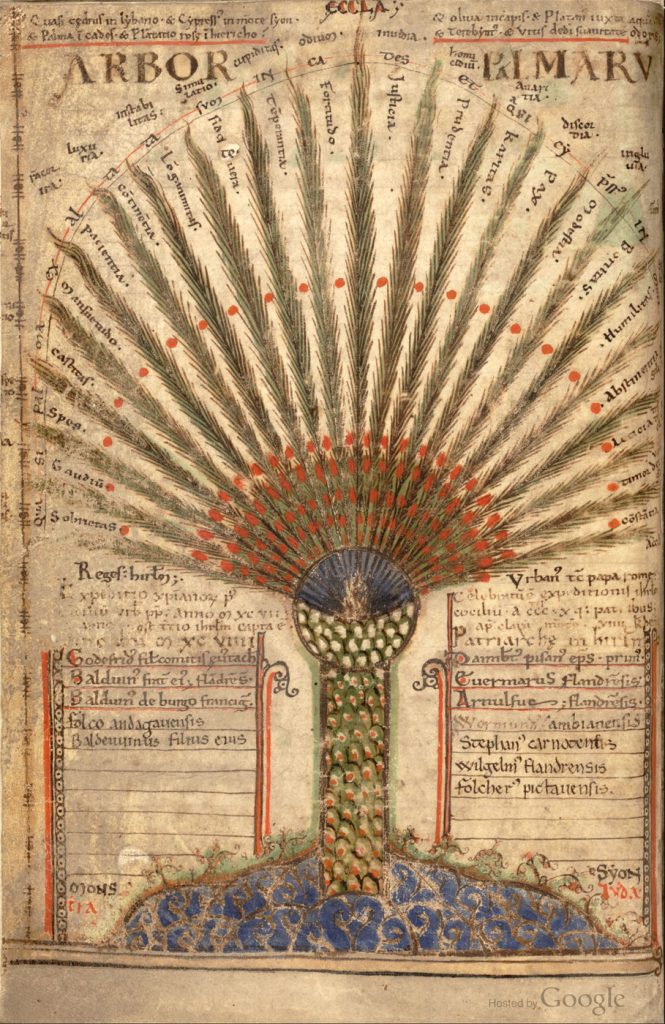
Pop-up books: Palmier in Liber Floridus, 1120, Ghent University, Ghent, Belgium. Wikimedia Commons (public domain).
Chronica Majora
Most agree that the first known entirely movable book was created by a Benedictine monk called Matthew Paris. His Chronica Majora was created in 1240. Like Liber Floridus, it was intended as a universal history of the world. Paris was an English Benedictine monk, and the rotating pivoting wheels inside the book (called volvelles) helped monks calculate lunar seasons and holy days.
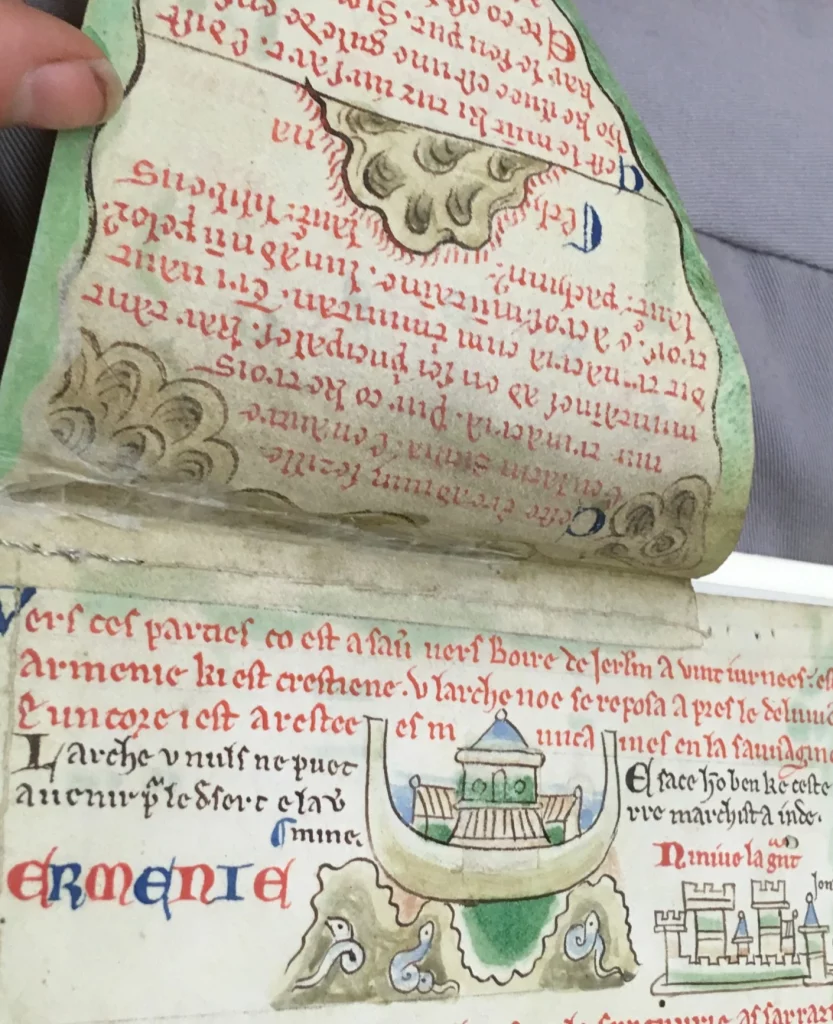
Pop-up books: Matthew Paris, Chronica Majora, 1240, Corpus Christi College Library, Cambridge, UK. Image via Gill Partington.
Ramon Llull
Around 1300, Catalan-speaking occultist, writer, and philosopher Ramon Llull, created his “logic machine,” composed of rotating circles of paper that answered philosophical questions on good and evil. Some say that Llull’s work, which was called a Lullian Circle, was a precursor of computation theory, although his works were used only to “prove” Christian doctrine.
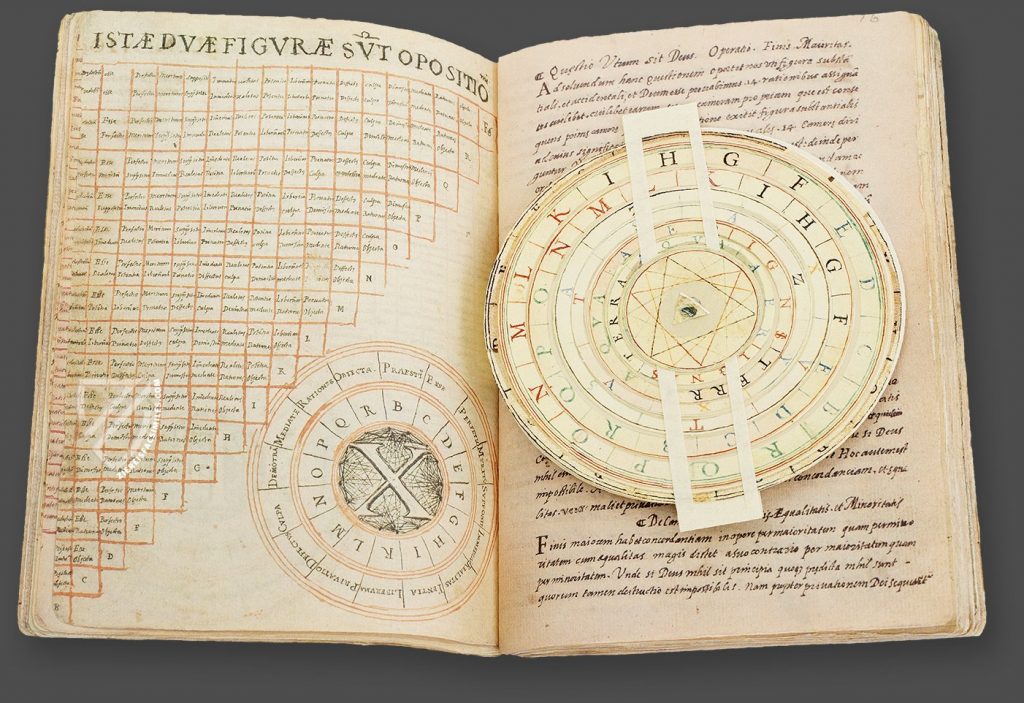
Pop-up books: Ramon Llull Ars Magna (facsimile), Library of the Monastery of El Escorial, Madrid, Spain. Facsimiles.
Astronomicum Caesareum
200 years later, in 1540, a similar type of book was created for Charles V, during his reign as Holy Roman Emperor. The Astronomicum Caesareum (The Emperor’s Astronomy) was produced by German humanist Petrus Apianus and consisted of nested circular pieces revolving on grommet fasteners.
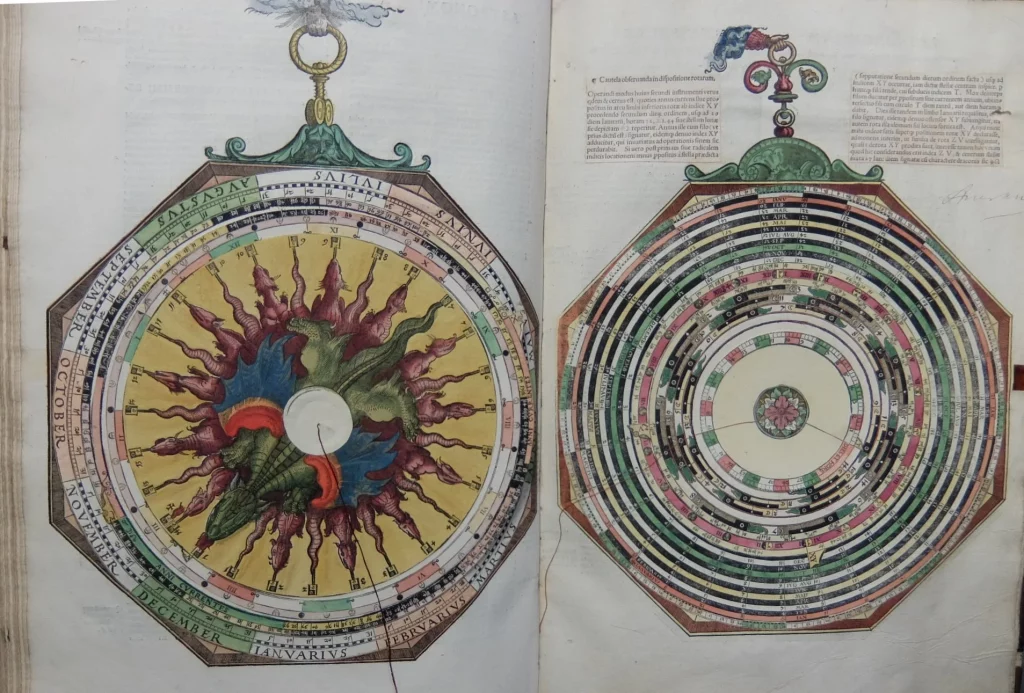
Pop-up books: Petrus Apianus, Astronomicum Caesareum, 1540, National Library of Scotland, Edinburgh, Scotland, UK.
Anatomical Machines
From philosophical machines, we move on to medicine. The medical profession got in on the pop-up act, creating anatomical books with layers and flaps showing the human body. The most famous, printed in 1543, was De Humani Corporis Fabrica (On the Fabric of the Human Body), by Andreas Vesalius, a brash, ambitious, and highly skilled young man. It featured the anatomy of the human body in seven superimposed layers. The astonishing work of Vesalius spread widely across Europe. Also influential was the incredibly detailed anatomy manual Catoptrum Microcosmicum by Johan Remmelin, published in 1619.
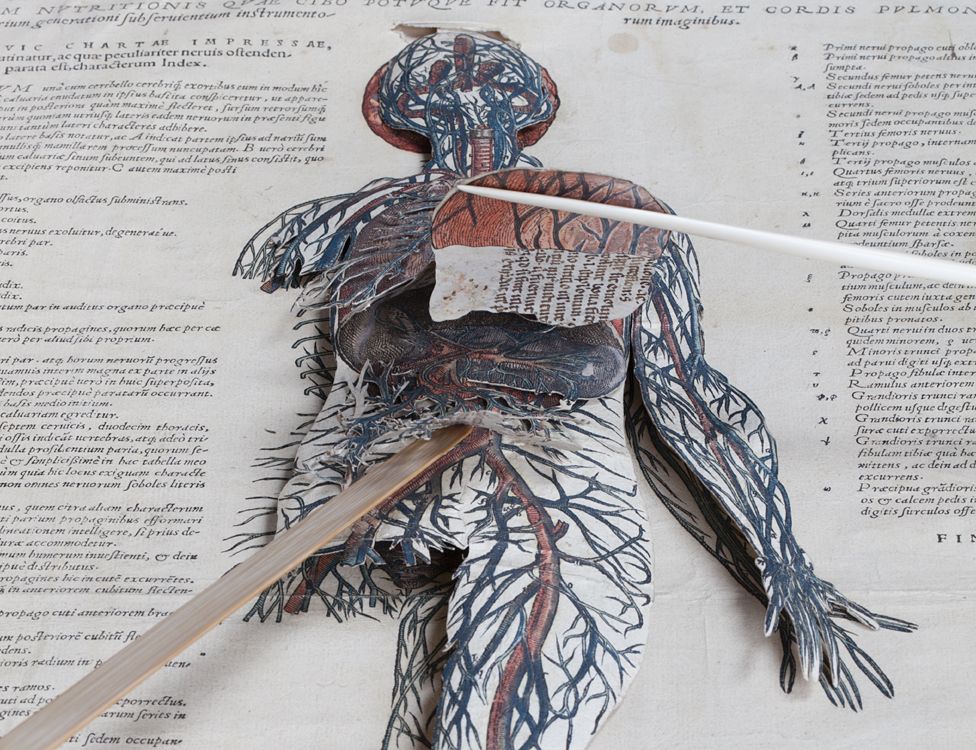
Pop-up books: Andreas Vesalius, De Humani Corporis Fabrica Librorum, CCF.46.36., detail of paper manikin, Cambridge University Library, Cambridge, UK.
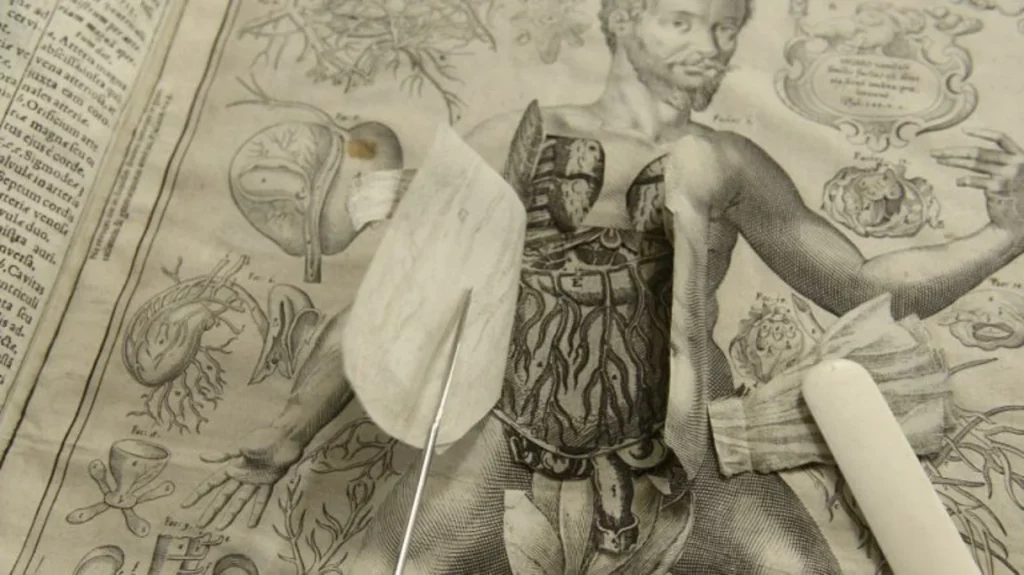
Pop-up books: Johann Remmelin, Catoptrum Microcosmicum, 1619, McGill University Library, Montreal, Canada.
Transformations and Tunnels
At this point, pop-up books came to be more widespread and popular. Transformation books are relatively easy to produce, utilizing flaps that lift or with sliding vertical slats, like venetian blinds. Before photography could offer an easy solution, it is said that English landscape architect Capability Brown used this system to document before and after images of his work. Tunnel books, also known as peep show books, consist of a long tunnel of paper, folded into a concertina shape and viewed through a hole in the cover. Inspired by theatrical stage sets, these were often produced to celebrate special events. Modern artist Carol Barton has recently revived this art form.
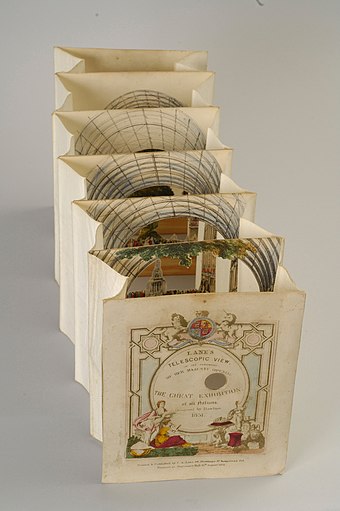
Pop-up books: Lanes Telescopic View of the Ceremony of Her Majesty Opening the Great Exhibition, 1851, V&A, London, UK
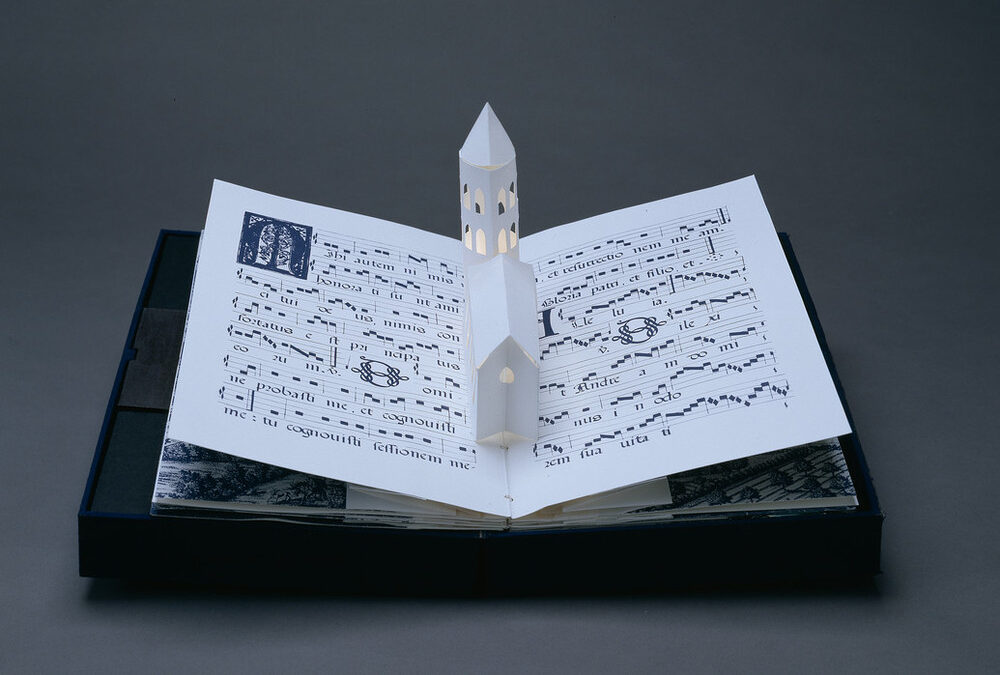
Pop-up books: Carol Barton, Five Luminous Towers: A Book to be Read in the Dark, 2001, National Museum of Women in the Arts, Washington, DC, USA. Photo by Lee Stalsworth.
English Harlequins
And finally, we get to books that children might enjoy. In 1765, printer Robert Sayer created his Harlequinade series. Drawn from popular pantomime characters, these became very popular with young audiences. Some were entertaining, others were puritanical, to educate the horrid little savages that we call children. In the 18th century, English publisher John Newbery began publishing very popular fables for children in a pop-up format.
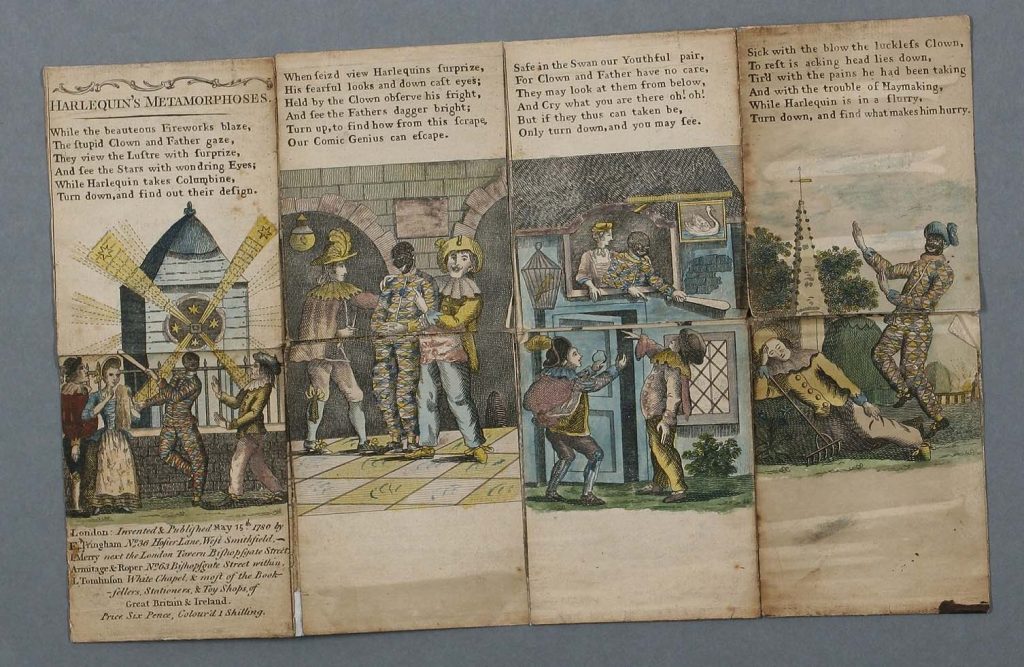
Pop-up books: Robert Sayer, Harlequin, 1765, State Library Victoria, Melbourne, Australia.
Lothar Meggendorfer
A big name in the 19th-century pop-up history is German Lothar Meggendorfer, who is often credited as the most original of all the movable bookmakers. Meggendorfer was known for designing complex intricate levers and pull tabs that were hidden in between pages. Meggendorfer used many new mechanical elements such as coils of copper wire and metal rivets. He was so influential in fact, that he now has an annual pop-up book award named after him. However, in his time, pop-up books were still relatively expensive and not available to all.
Large Scale Production
Thomas Dean and Son was the first publisher to produce pop-ups on a large scale. They released a wide selection of pop-up books throughout the 1860s. Their production department employed skilled craftspeople and artists. They worked with transformation style books, where the picture was divided into equal sections and when a tab was pulled, the picture would magically transform. German Ernest Nister moved the art on with his “dissolving” multi-layered kaleidoscopic pictures, and London based S and J Fuller produced hand-coloured paper dolls. With their tabbed clothes, these dolls were very popular with upper-class children.
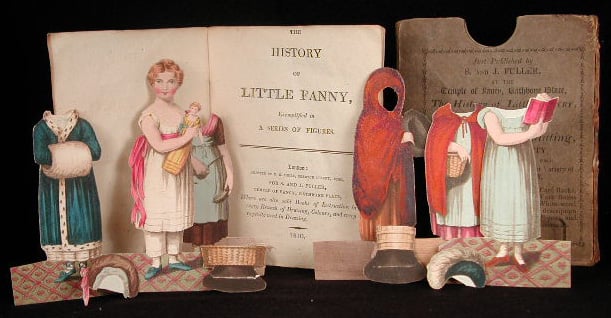
Pop-up books: S and J Fuller, The History of Little Fanny, 1810, Osborn Collection, Toronto, Canada.
Pop-Up Renaissance
The First World War saw the increase of production of labour and decrease in movable books production. People and materials were needed in the war effort, and imports/exports of children’s books declined. But then through the 1930s and 1940s, there was something of a renaissance in pop-up publishing. Stephen Louis Giraud produced annuals for the British Daily Express newspaper and created the Bookano Series. These did not have the detail and skill of earlier pop-up, but as inexpensive, brightly colored books, they were incredibly popular. Some argue that the Bookano books are the first true pop-up books for children because the pop-ups can be viewed from a full 360 degrees, not just the front side facing the viewer. In America, Blue Ribbon books by Harold Lentz had a similar impact.
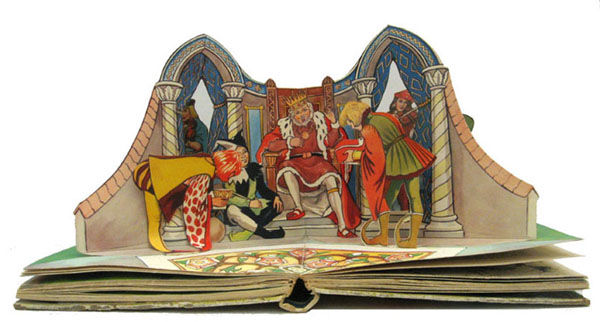
Pop-up books: Stephen Louis Girard, The Apples of Iduna, Bookano Stories, no 15, 1948. Biblio.com.
The Prolific Czech Kubašta
Czechoslovakia in the 1960s was a place of huge upheaval. In 1968, the Soviet Union invaded, changing the life of artist Vojtěch Kubašta forever. Kubašta had trained as an architect in Prague in the 1930s, but when the Soviets nationalized the publishing industry after their invasion, he had to broaden his work into commercial art, advertising and books of fairy tales. Editions of his first pop-up book, Little Red Riding Hood, is much sought after by art collectors all over the world. To date, more than 10 million copies of his books have been sold and his works have been translated into 27 different languages.
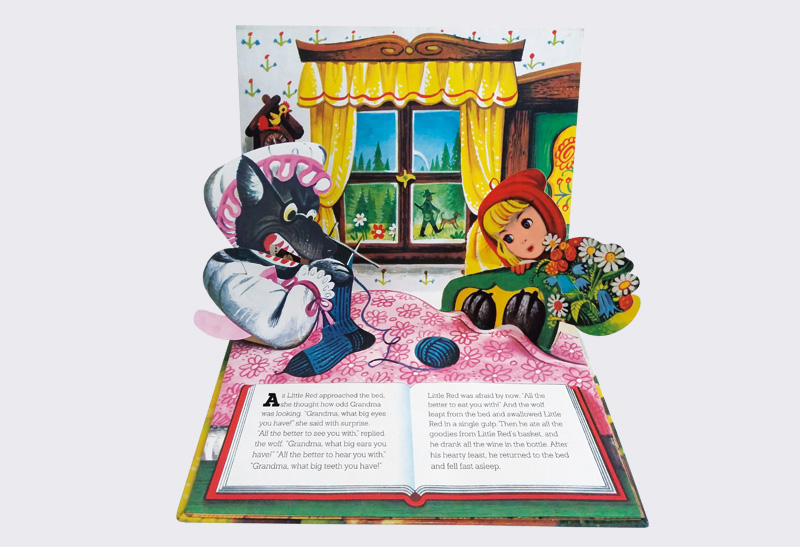
Pop-up books: Vojtěch Kubašta, Little Red Riding Hood, English translation. Albatros Media.
American Waldo Hunt
Sadly, the Warsaw Pact prevented the United States from importing Kubašta books from Czechoslovakia. Publisher Waldo Hunt stepped into the market, employing creative engineers with top-notch technical skills. From this point on, interest in pop-ups soars, and we see some big names involved, such as Walt Disney, Barbar, Sesame Street, and Harry Potter.
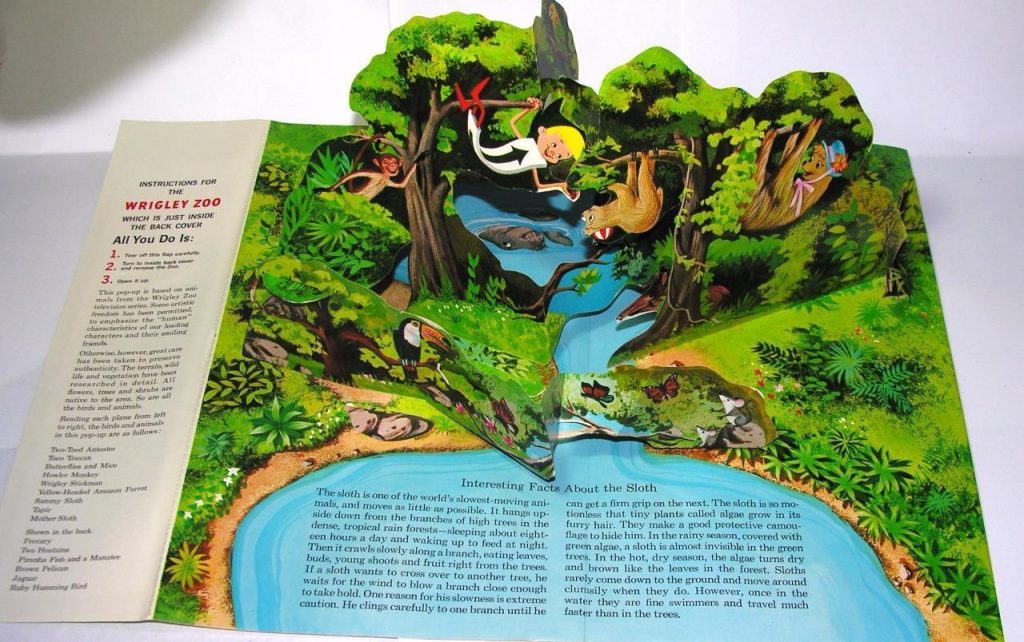
Pop-up books: Waldo Hunt, The Wrigley Zoo, 1960. Ebay.
Conceptual Art
We probably don’t think of pop-up books as conceptual art. But look again: in a great pop-up book, conceptual art is literally popping off the page! Folded paper, scissors, and glue are the basic building blocks, but from there, anything can happen. Andy Warhol certainly agreed. His Index Book included a tear-out cardboard insert of his iconic Campbells soup can, plus an inflatable silver balloon!
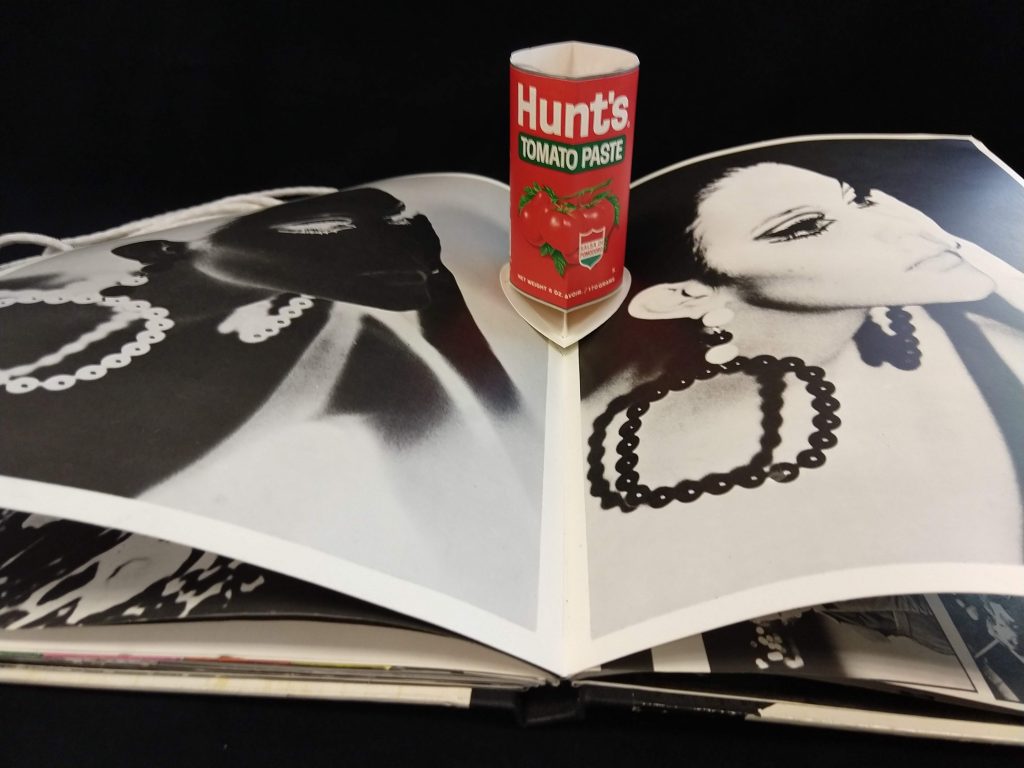
Andy Warhol, Index Book, 1967, Smithsonian Museum, Washington, DC, USA.
Modern Art
Pop-up book artist Colette Fu uses her own photography in her pop-up books. Some of her works are installations that are big enough to step inside. Designer Peter Larkin has produced a series of giant pop-up artworks, exploring the history of burlesque, although these are yet to be published. Sjoerd Hofstra and Karen O’Hearn are two artists from Brooklyn, New York, who work together to produce Books In Motion, exploring sophisticated architecture and the geometry of nature.
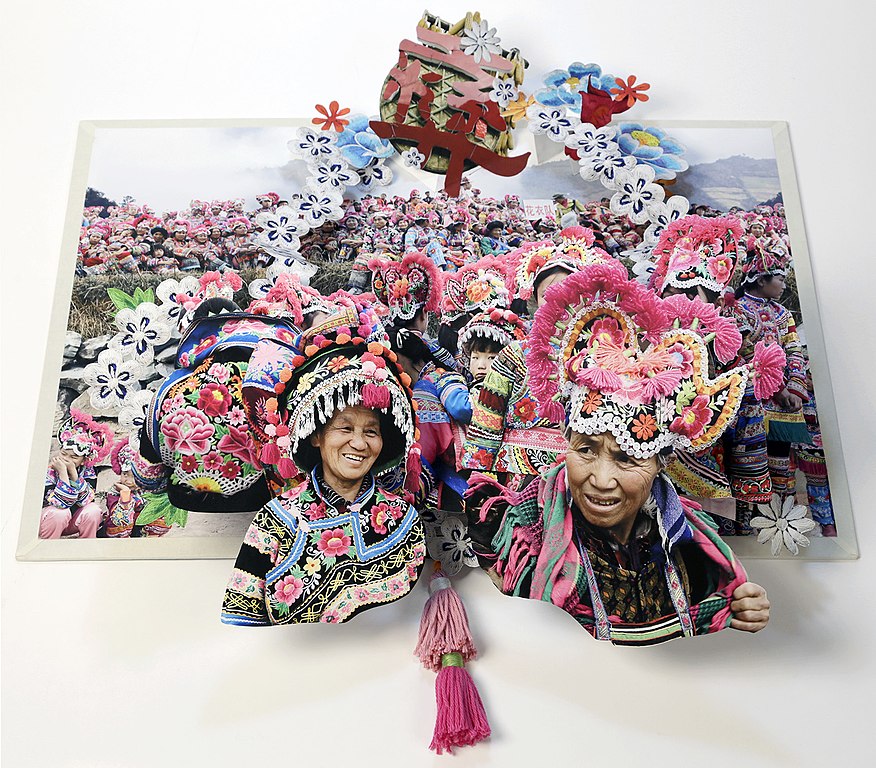
Pop-up books: Colette Fu, Yi Costume Festival, 2013, National Museum of Women in the Arts, Washington, DC, USA.
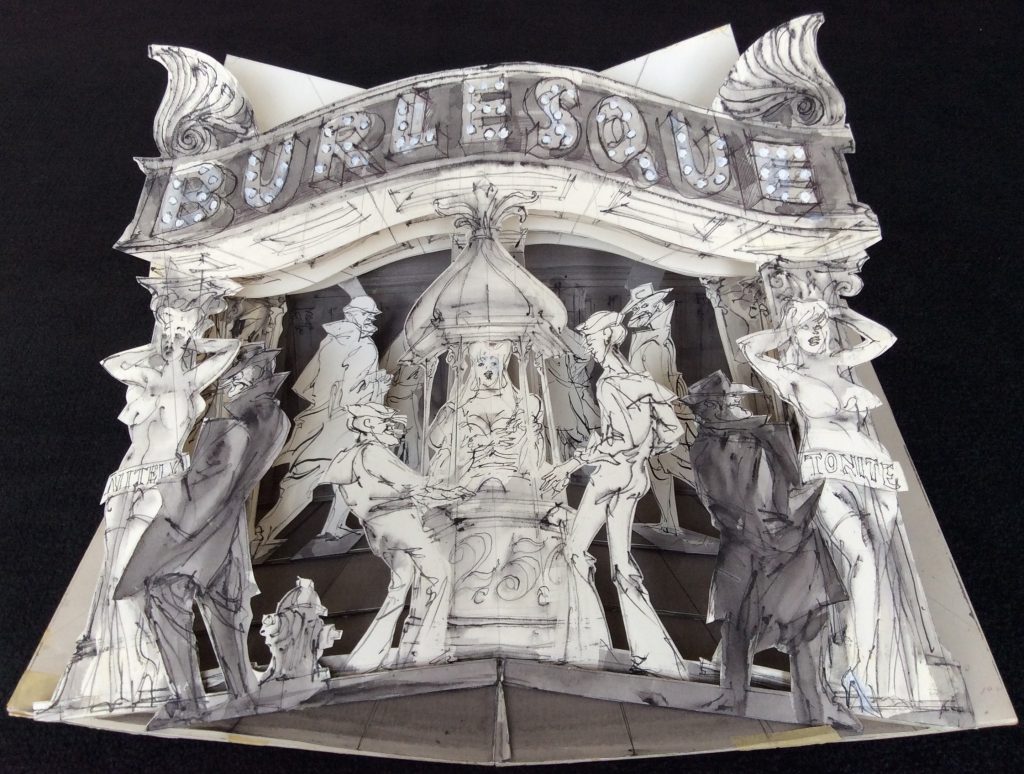
Pop-up books: Peter Larkin, Burlesque, c. 1994. The Paris Review.
Art or Literature?
Some pop-up books receive attention as artworks or literary works in their own right. One example is Star Wars: A Pop-Up Guide to the Galaxy, by Matthew Reinhart. David A. Carter’s bug themed pop-ups are immensely popular. Jan Pienkowski and Robert Sabuda are considered stars of the pop-up world. David Hawcock has made pop-ups of Leonardo da Vinci‘s engineering feats. In 2002, award-winning illustrator Paul O Zelinsky worked with paper engineer Andrew Baron, to create one of the most complex movable books: Knick-Knack Paddywhack, with over 200 moving parts! You can get a pop-up Game of Thrones, or The Walking Dead, if that’s your thing, and let’s not forget, a pop-up book of London plays a major role in the film Paddington 2.
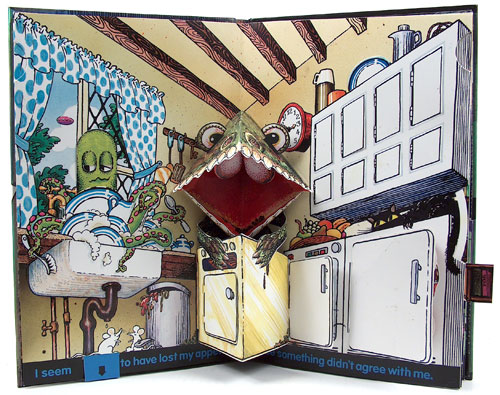
Pop-up books: Jan Pienkowski, Haunted House, 1979. Artist’s website.
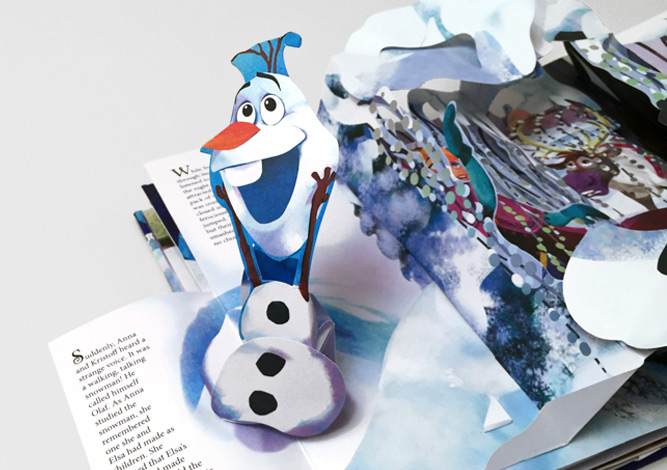
Pop-up books: Matthew Reinhart, Frozen, 2016. Artist’s website.
Captivating
I challenge you not to love a pop-up book. Captivating, hands-on, and beautiful to look at, these feats of paper engineering allow us to enter another world, where a story comes to life. In an age of high tech, here is family entertainment made of just paper, inks, and glue. And now we have them for every age and every price range. So as Christmas or birthdays loom, check out the pop-ups!
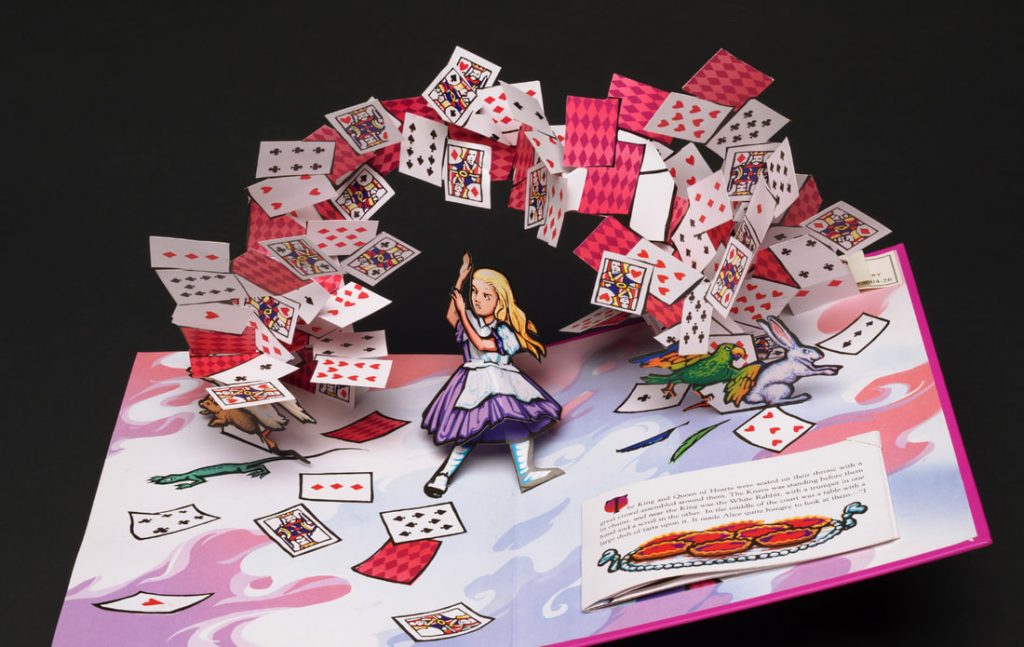
Pop-up books: Robert Sabuda, Alice In Wonderland, 2003. Artist’s website.
